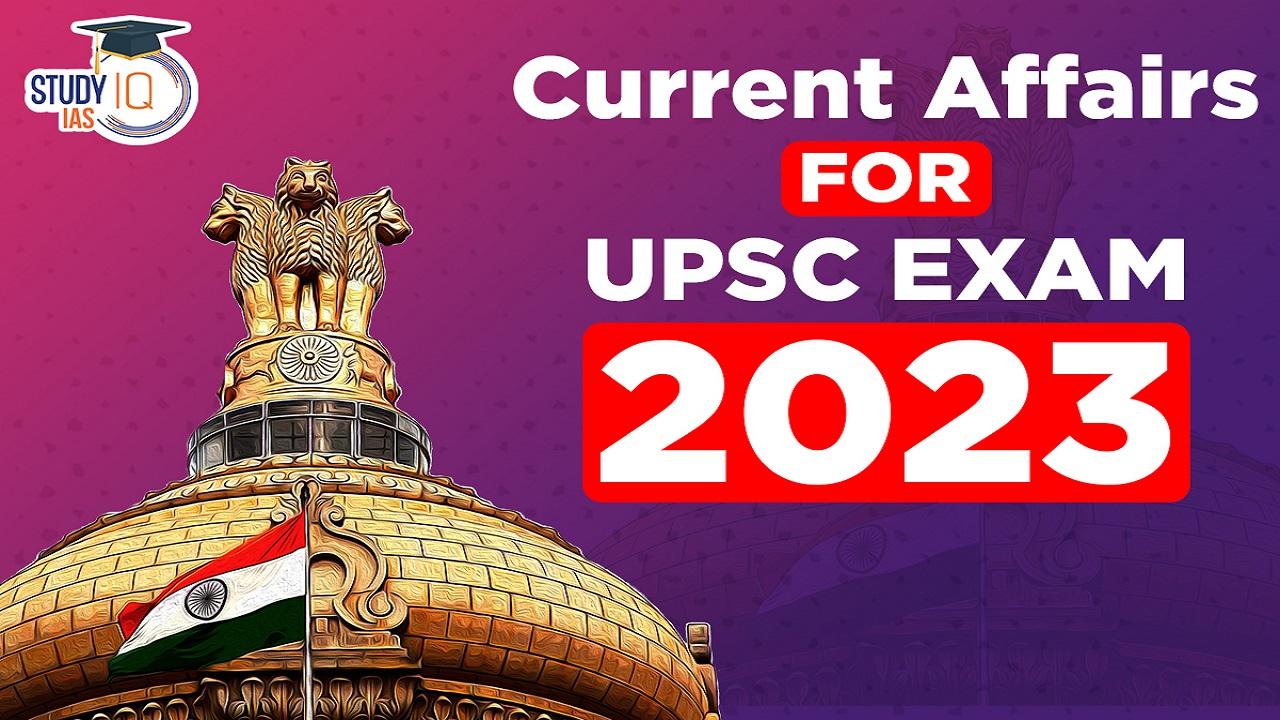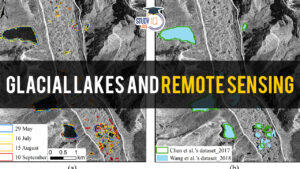Current Affairs 7th August 2023 for UPSC Prelims Exam
Language of the Court
Context: The Supreme Court has observed that although there are 22 official languages in the country, Hindi is “the national language”.
More on News
- The SC was dealing with a transfer petition filed in a motor accident case that occurred in Siliguri, West Bengal.
- The plea to transfer the case from the Motor Accident Claims Tribunal (MACT) in UP to the one in Darjeeling was filed under the Motor Vehicles Act (MVA) 1988.
- The Act allows an application for compensation to be made by the persons sustaining the injury in the accident.
- According to the petitioner, since all the witnesses of the petitioner were from Siliguri, language could be a barrier.
- Since the claimants had opted for the MACT in Farrukhabad, UP, and the same was permitted by law, the court rejected the transfer plea.
- The court held that Hindi being the national language, it is expected of the witnesses to communicate and convey their version in Hindi.
About Language of the Court
- Status of Hindi: Though over 100 languages and 270 mother tongues are spoken across the country, the Constitution does not list any one language as India’s “national language”.
- Article 343 (1) (“Official language of the Union”): The official language of the Union shall be Hindi in Devanagari script and the form of numerals to be used for the official purposes of the Union shall be the international form of Indian numerals.
- Article 351 (“Directive for development of the Hindi language”): It shall be the duty of the Union to develop and promote the spread of the Hindi language, so that it may serve as a medium of expression for all.
- This must be done without interfering with its genius, forms, style and expressions used in Hindustani and in the other languages of India specified in the Eighth Schedule.
- Eighth Schedule: There are 22 languages listed under the Eighth Schedule of the Constitution. These include Hindi, Bengali, Punjabi, Kannada, Tamil, Telugu, Malayalam, Sanskrit, Assamese, Marathi, Nepali, Oriya, and Urdu, etc.
- There were only 14 languages in this Schedule initially, others including Bodo, Dogri, Maithili, and Santhali were added in 2004.
- There are demands to include another 38 languages in the Eighth Schedule, such as Bhojpuri, Garhwali (Pahari), and Rajasthani.
- Notably, English is absent from the list of 22 in the Eighth Schedule. It is one of the 99 non-scheduled languages of India.
- Status of English: English, alongside Hindi, is one of the two official languages of the central government.
- Article 343(2): For a period of 15 years from the commencement of this Constitution (January 26, 1950), the English language shall continue to be used for all the official purposes of the Union.
- Article 343(3): Parliament may by law provide for the use, after the said period of 15 years, of – (a) the English language, or (b) the Devanagari form of numerals, for such purposes as may be specified in the law.
- The Official Languages Act 1963: It provided for the continuation of English Language for official purposes of the Union and for use in Parliament even after the expiration of the 15-year period.
- Language used in Courts:
- Article 348 (1): Until Parliament by law otherwise provides, all proceedings in the SC and in every HC and all Bills, Acts, ordinances, rules, orders at the Union and state levels, shall be in the English language.
- Article 348 (2): Permits the use of the Hindi language or any other language used for any official purposes of the State, in proceedings in the HC after authorisation by the Governor and with the previous consent of the President.
- While the proceedings could be in any official language, it mandates that any judgment, decree or order passed or made by such HC must be in English.
- The Official Languages Act 1963: It dealt with optional use of Hindi or other official language in judgements, etc., of HCs.
- The Governor of a state can, with the President’s consent, authorise the use of Hindi or the official language of the State, in addition to the English, for the purposes of any judgement, decree or order made by the HC for that State.
- However, it shall be accompanied by an English translation issued under the HC’s authority.
- Language used in Subordinate Courts:
- While Hindi and English are permitted by the HCs and the SC, usage of other regional languages is not. However, the situation for courts subordinate to the HC is different.
- The Code of Criminal Procedure 1973 states that the State Government may determine what shall be the language of each Court within the State other than the HC.
- According to the Code of Civil Procedure (1908), every court that is subordinate to an HC must use the language that was in use at the time the Code was adopted until the State Government directs otherwise.
- Evolvement of Language of Judiciary:
- In 1965, the Cabinet Committee decided that the Chief Justice of India’s consent must be taken for the use of any language besides English in the HCs.
- Thereafter, the use of Hindi was authorised in the HCs of UP (1969), MP (1971), and Bihar (1972) in consultation with the CJI.
- Subsequently, Gujarat, Chhattisgarh, West Bengal, Karnataka, and TN have approached the central government and the CJI seeking the use of their respective regional languages in the HCs in their states.
- However, the SC decided to not accept the proposals.
- In 2022, the Indian PM underlined the need to encourage the use of local languages in courts since a large section of the country’s population finds it difficult to understand the judicial process and rulings of the court.
- In subsequent remarks, (then) CJI N V Ramana said that it might happen over a period not suddenly.
Current Affairs 5th August 2023 for UPSC Prelims Exam
Starlink Project
Context: Amid the Russia-Ukraine conflict, there are global debates surrounding Starlink’s satellite integration.
More on News
- SpaceX’s (the company owned by Elon Musk) Starlink is helping Ukraine in the fight against Russia by providing thousands of Starlink satellite internet devices to Ukraine without any charge.
- It also emerged as a crucial communication tool for Ukraine’s armed forces because their own mediums of communication were compromised by Russian hackers.
About Starlink Project
- Definition: The “Starlink” is a SpaceX project to build a broadband network to provide space internet (i.e satellite based) to the remotest corner of world.
- It is done by a constellation of low earth orbit satellites.
- The Starlink satellites will be deployed in the altitude band of 350 km to 1,200 km in the Low Earth Orbit (LEO). The LEO extends up to 2,000 km above the Earth’s surface.

- Advantages:
- Unlike traditional internet providers, Starlink doesn’t require any ground infrastructure. One just needs to have a small satellite dish or a receiver device to access high-speed internet, much like satellite TV.
- Starlink consists of thousands of satellites that orbit around the Earth and aren’t too far from the ground, they are able to provide high bandwidth without many glitches. This has also made drone warfare much easier.
- There is also reduced latency between sender and receiver as the satellites are placed in LEO.
- The latency is the time lag between a user seeking data, and the server sending that data.
- Once it becomes fully operational, Starlink will offer internet access from virtually anywhere on the planet.
- Disadvantages:
- Due to their lower height, their signals cover a relatively small area. As a result, many more satellites are needed to reach signals to every part of the earth.
- It increases number of satellites in space and thereby increasing space debris and increased risk of collisions.
- Starlink in Ukraine: As Russian forces advanced in Ukraine, they closed Ukrainian internet services and tried to block social media.
- Elon Musk made Starlink available in Ukraine immediately after the invasion started.
- About 15,000 of Starlink’s sets of dishes and routers have been shipped to the country.
- Starlink has kept things going, like public services and government in Ukraine. The Russians haven’t found a way of disabling it.
- It has also been used on the battlefield. Ukrainian forces are using it to communicate – for example, between headquarters and troops in the field. Its signals cannot be jammed like ordinary radio signals can be, and it takes only 15 minutes to set up the kit.
- Starlink in Iran: After the September 2022 protests in Iran, the government shut off internet access in large parts of the country.
- Musk quickly stepped in to turn on Starlink connectivity.
- Activists and protestors smuggled in satellite dishes, and to date over 100 Starlink terminals are active in Iran, although the government there has declared it illegal.
- This example clearly shows the problem of Starlink’s monopoly and lack of regulation.
FATF on NPOs
Context: The Financial Action Task Force (FATF) is trying to prevent overuse of counter-terror financing rules in non-profit sector.
About Financial Action Task Force (FATF)
- Definition: FATF is an inter-governmental body that has developed standards to prevent and combat money laundering and terror financing.
- It was established in 1989 during the G7 Summit in Paris to develop policies against money laundering.
- Objective: To establish international standards, and to develop and promote policies, both at national and international levels, to combat money laundering and the financing of terrorism.
- In 2001 its mandate expanded to include terrorism financing.
- Headquarters: Paris, France.
- Members: FATF members include 37 countries, including the United States, India, China, Saudi Arabia, UK, Germany, France.
- India became a member of FATF in 2010.
FATF on Non-Profit Organisations (NPO)
- FATF lists examples of measures that countries can apply to NPOs according to their terrorist financing risks exposure. However, these examples have been perceived by some countries or jurisdictions as compulsory.
- The Financial Action Task Force (FATF) is looking to revise its current recommendations aimed at safeguarding non-profit organisations (NPO) from being abused for terrorist financing.
- The draft amendments seek to address the problem of over-application of preventive measures to the NPO sector in some countries, recognizing the negative impact this can have on legitimate NPO activities.
Key Recommendations in FATF’s Draft Proposal
- Countries should develop an understanding of the different degrees of terrorist-financing risk posed to non-profits and the corresponding levels of mitigating measures they require.
- Many NPOs may face low TF [Terrorist Financing] risk exposure, may have adequate self-regulatory measures to mitigate such risks, and/or may already be subject to adequate level of legal and regulatory requirements, such that there may be no need for additional measures.
- Countries should be mindful of the potential impact of measures on legitimate non-profit activities and apply them where they are necessary to mitigate the assessed terrorist-financing risks, without unduly disrupting or discouraging legitimate NPO activities.
- Countries should have in place focused, proportionate and risk-based measures to address terror-financing risks, in line with the risk-based approach.
- For NPOs identified to be at low risk of TF abuse, countries may focus only on the undertaking outreach concerning terrorist financing issues, and may decide to refrain from taking additional mitigating measures.
- Countries should have clear policies to promote accountability, integrity and public confidence in the administration and management of NPOs; undertake outreach and educational programmes for stakeholders; and work with non-profits to develop and refine best practices.
- Countries should also encourage non-profits to conduct transactions via regulated financial and payment channels wherever feasible, keeping in mind the varying capacities of financial sectors in different countries and in different areas and the risks of using cash.
Clouded Leopards
Context: Two scientists from the Wildlife Institute of India (WII) have found that the clouded leopard in western Assam’s Manas National Park and Tiger Reserve seemed to play a mysterious game in the tropical canopy forests.
About Clouded Leopard
- Definition: It is a wild cat inhabiting dense forests of the Himalayas through mainland Southeast Asia into South China.
- Categorisation: The clouded leopard is categorised into two species:
- Mainland clouded leopard distributed from central Nepal to peninsular Malaysia,
- Sunda clouded leopard (Neofelis diardi) native to Borneo and Sumatra.

- Conservation Status: IUCN: Vulnerable
- Features:
- The mainland clouded leopard (Neofelis nebulosa) is often likened to the Ice Age sabretooth because it has the largest canines in proportion to its skull size among all cat species.
- It also has rotating rear ankles that enable it to climb down head first from trees, unlike the other felines.
- They seemed to go wherever they please without worrying about other predators, primarily because of their ability to climb trees, even hang upside down from large branches.
- It most often inhabits primary evergreen tropical forests and lives in secondary forests, logged forests, dry tropical forests, grassland, mangrove swamp, scrubland, and coastal hardwood forest.
- States with Clouded Leopard: In India, it is found in Sikkim, northern West Bengal, Meghalaya subtropical forests, Tripura, Mizoram, Manipur, Assam, Nagaland and Arunachal Pradesh.
- It is the State animal of Meghalaya.


 Current Affairs 27th April 2024 for UPSC...
Current Affairs 27th April 2024 for UPSC...
 Small Finance Banks, Key Features and Op...
Small Finance Banks, Key Features and Op...
 Glacial Lakes and Remote Sensing
Glacial Lakes and Remote Sensing

















